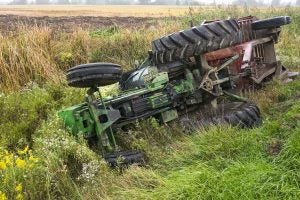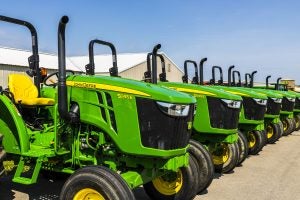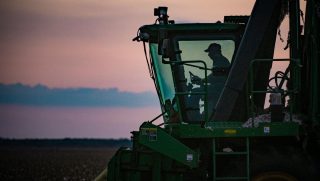Farmers are lucky. They get to live in beautiful, scenic areas, experience nature, and work in the dirt every single day. But you also must have intelligence, common sense, education, and real luck on the farm since agricultural careers are one of the most dangerous professions you can have. Farmers are seven times more likely to die while at work than any other employee in the U.S. Accidents with equipment, grain entrapments, chemical exposure — there are so many potential dangers lurking around the farm.
In fact, more farmers die each year than police officers, firefighters, or other emergency responders. More than half of deaths occurring on the farm are a result of tractor roll-over accidents, leading to nearly 100 deaths per year.
Let’s face the facts about the dangers of tractor roll overs and discuss how to prevent them.
- 80 percent of deaths caused by rollovers happen to experienced farmers.
- 1 in 7 farmers involved in tractor overturns are permanently disabled.
- 7 out of 10 farms will go out of business within five years of a tractor overturn fatality.
- The probability of death for a rollover in a tractor without rollover protection is 40 percent.

Many fatalities could be prevented if the tractor was fitted with a rollover protection (ROP) device. ROPs are 99 percent effective in preventing injury or death in the event of an overturn when used with a seatbelt, and 70 percent effective when used without a seatbelt. Unfortunately, more than half of tractors in use in the United States do not have rollover protection.
Tractors are used on nearly every type of agricultural operation and serve a variety of functions. They are a key piece of equipment for any type of land management and can be very expensive to purchase, even in the millions of dollars. Any tractor built after 1985 is required to have roll-over protection devices and a seatbelt, but that doesn’t mean all farmers will use them or even have “new” equipment. It is not uncommon for farmers, especially smaller farms, to utilize older equipment. Since farms run on tight profit margins, they often try to purchase cheaper, used equipment, repair their own equipment, or make do with another piece of equipment to avoid purchasing something new and expensive.

For those farms that have tractors with no roll-over protection devices installed, it can be difficult to convince the manager to get one retro-fitted to the tractor. Taking a tractor of commission long enough to have an additional device welded on can be a difficult decision when that equipment is what allows you to make money.
Luckily, retro-fitting your tractor to have an ROP device installed can be pretty cost-effective. Typically, this process will cost about $1,200 for the average tractor, which really is a small price to pay for such a great sense of protection. Yet, it still seems to be too much for some operations, or they simply don’t know the dangers of not having ROP.
Good news? There is a national project offering financial rebates to help incentivize farmers to install ROPs on their equipment. The rebate program can help bring your out-of-pocket costs to less than $500! You can access the National ROPS rebate program here.
Michelle Miller, the “Farm Babe,” is an internationally recognized keynote speaker, writer, and social media influencer and travels full time to advocate for agriculture. She comes from an Iowa-based row crop and livestock farming background and now resides on a timber farm in North Central Florida.


